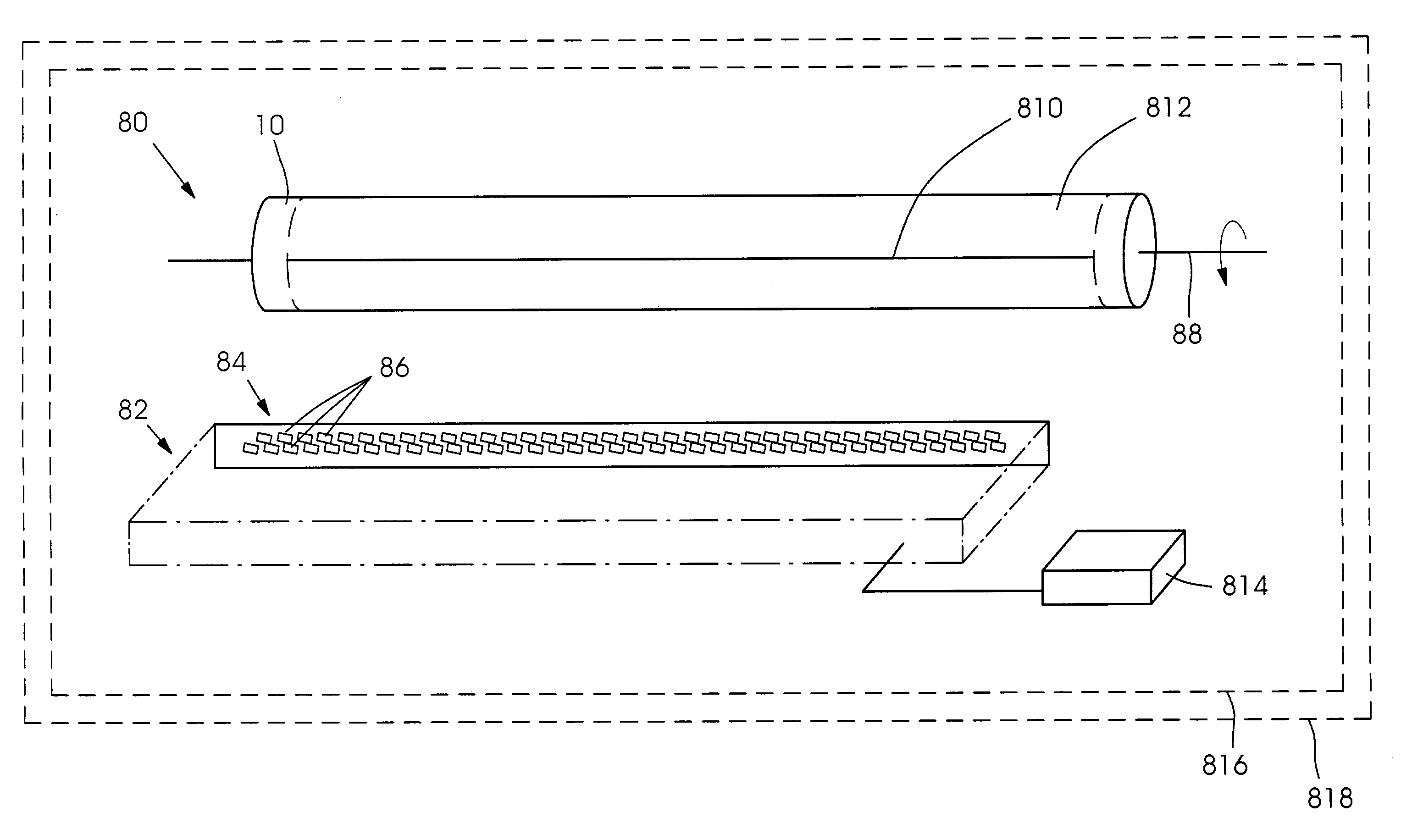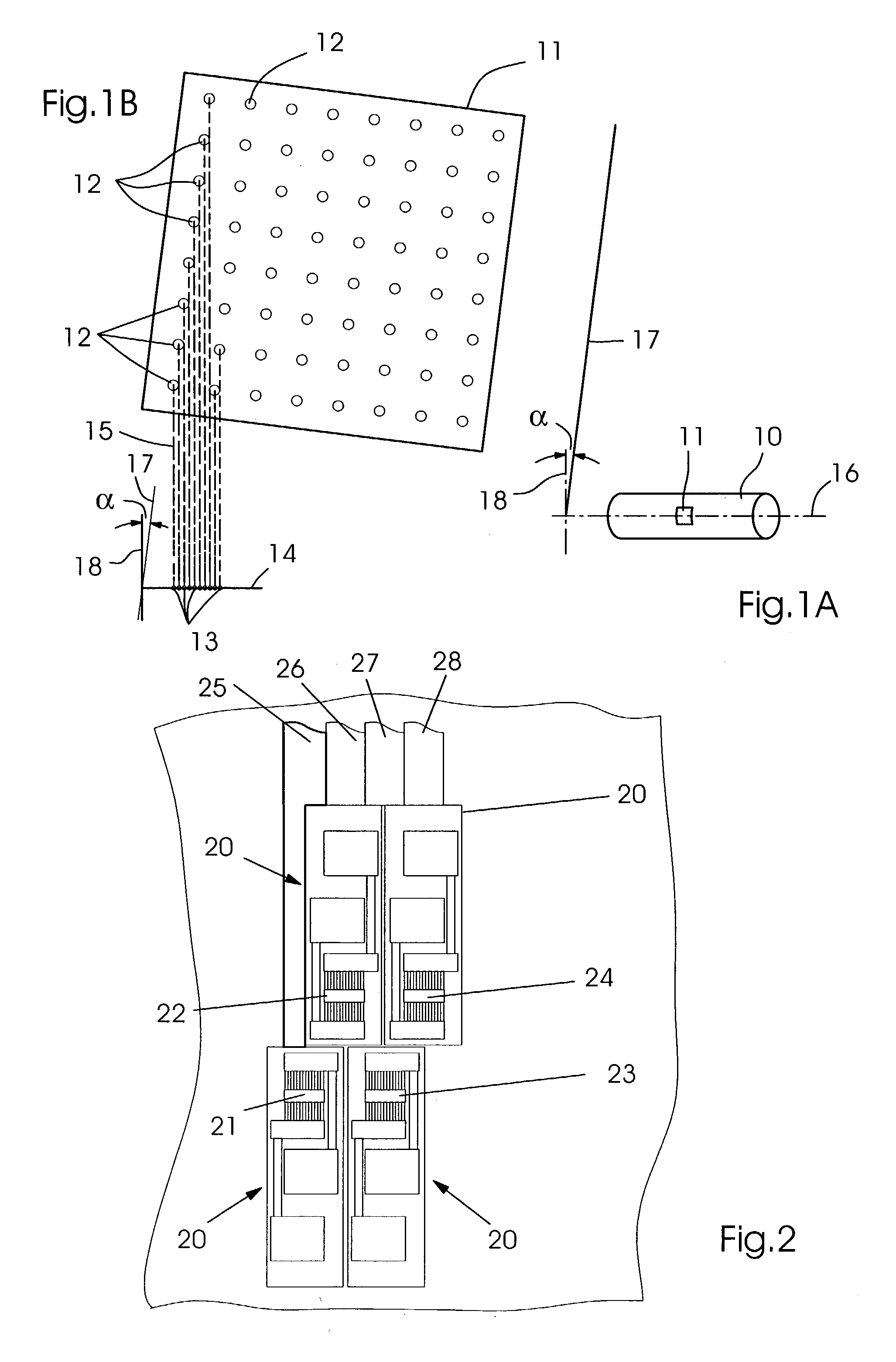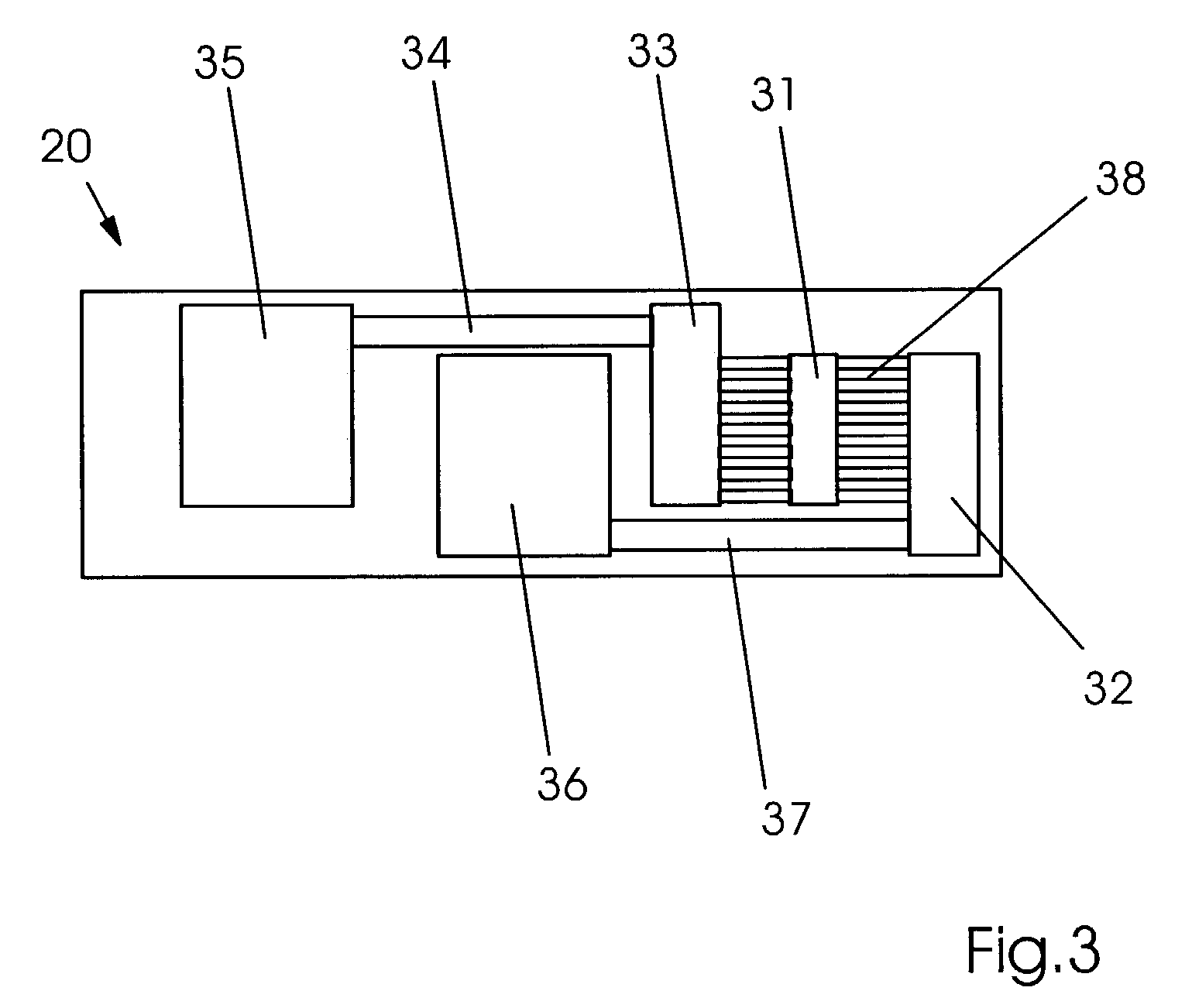Method for printing an image on a printing substrate and device for inputting energy to a printing-ink carrier
- Summary
- Abstract
- Description
- Claims
- Application Information
AI Technical Summary
Benefits of technology
Problems solved by technology
Method used
Image
Examples
Embodiment Construction
[0048]In FIG. 1, the relative position of the number of image spots 12 on a printing-ink carrier 10 in the inventive device for inputting energy to a printing-ink carrier 10 is shown in Subfigures 1A and 1B) for the purpose of illustration. Subfigure 1A of FIG. 1 depicts an advantageous embodiment of a printing-ink carrier 10. Printing-ink carrier 10 is a cylinder body, represents the lateral surface of a cylinder partially or in its entirety, or is held on a cylinder. Printing-ink carrier 10 is designed such that it can rotate about an axis of rotation 16. Segment 11 of the surface of printing-ink carrier 10 is the region where image spots of a VCSEL bar come to rest when triggered simultaneously. The image spots are regularly arranged on intersection points of a Cartesian grid. The axes defining the grid are rotated by inclination angle α with respect to axis of rotation 16 and to the normal (perpendicular) 18 to the axis of rotation: unfolding direction 17 and normal 18 form incl...
PUM
 Login to View More
Login to View More Abstract
Description
Claims
Application Information
 Login to View More
Login to View More - R&D
- Intellectual Property
- Life Sciences
- Materials
- Tech Scout
- Unparalleled Data Quality
- Higher Quality Content
- 60% Fewer Hallucinations
Browse by: Latest US Patents, China's latest patents, Technical Efficacy Thesaurus, Application Domain, Technology Topic, Popular Technical Reports.
© 2025 PatSnap. All rights reserved.Legal|Privacy policy|Modern Slavery Act Transparency Statement|Sitemap|About US| Contact US: help@patsnap.com



